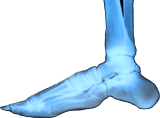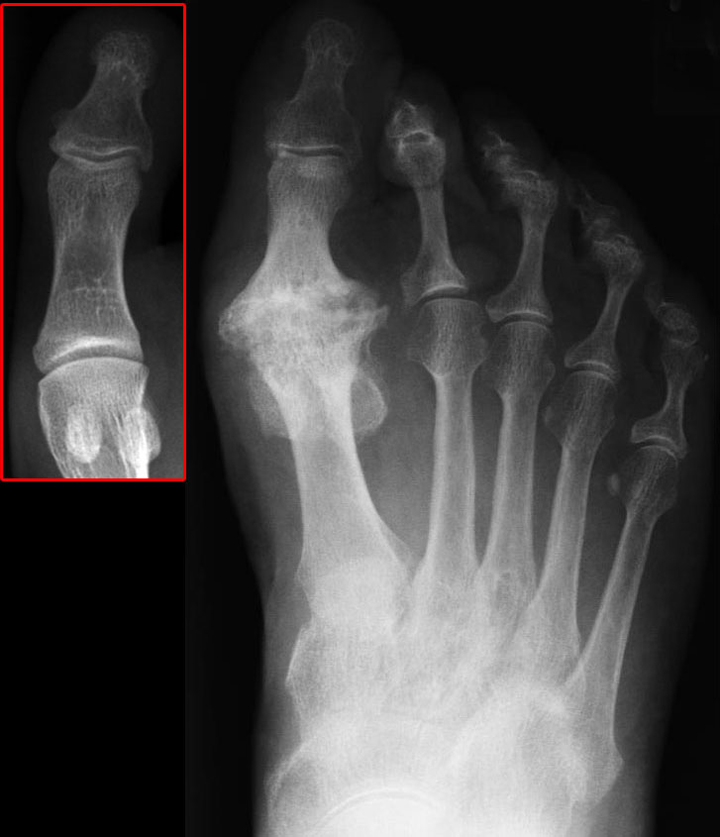
Affiliated Foot Care Center
Call 860•349•8500 or 203•294•4977

Although the condition is degenerative, it can occur in patients who are relatively young particularly active sports people who have at some time suffered trauma to the joint (turf toe). A notable example is NBA star Shaquille O'Neal who returned to basketball after surgery.
One problem that afflicts the big toe is called hallux rigidus: Normal movement of your big toe is restricted to varying degrees. Hallux Rigidus can vary from being a slight problem to disabling, since you use our big toe whenever you walk, stoop down, climb up, or even stand. If you have pain and/or stiffness in your big toe, you may have this problem.
What is happening here is that the joint at the base of your big toe gets increasingly harder to bend and flex as the cartilage begins to wear out. This is a type of arthritis that afflicts many people.
Because hallux rigidus is a progressive condition, your toe's motion decreases as time goes on. In its earlier stage, motion of your big toe is only somewhat limited—at that point, the condition is called "hallux limitus." But as the problem advances, your toe's range of motion gradually decreases until it becomes stiff and inflexible, sometimes called a "frozen joint."
The sooner this condition is diagnosed, the easier it is to treat. Therefore, the best time to see Dr Fosdick for this condition is when you first notice that your big toe feels stiff or hurts when you walk, stand, bend over, or squat. If you wait until bone spurs develop, your condition is likely to be more difficult to manage.
Dr. Fosdick can prescribe shoe modifications, orthotics, medications, injection therapies and physical therapy. But if you let this go, the only solution is surgical. If you tend to have arthritis in the rest of your body or you have a family history of arthritis and you notice lack of range of motion in your big toe, you should see Dr. Fosdick early enough for non-surgical alternatives.